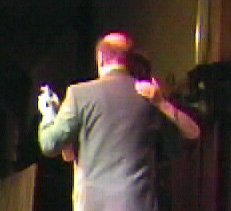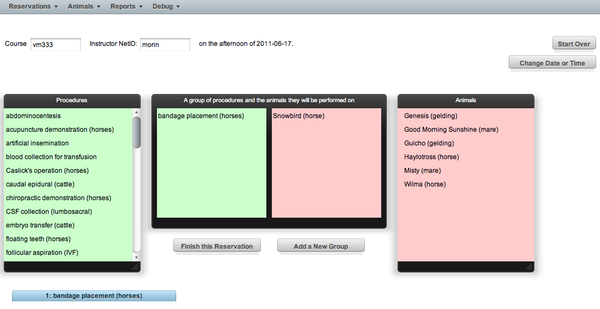As the ground rushes up to meet him, Kevin thinks about missiles again. One missile in particular, a shoulder-fired anti-aircraft missile, blasted from a tube balanced on the bump where some guy’s clavicle meets his scapula. What guy—a Saudi? An Egyptian? A Yemeni? Some pissed-off Arab anyway, kneeling in the back of a dinged-up pickup truck with Texas plates, or crouching on the springy backseat of a rented convertible on a track just outside the airport fence. One of those portable weapons from Afghanistan, back when Afghanistan was somebody else’s problem, called… something, a Slammer or a Tingler or something like that. Kevin recalls that it’s the same name as a cocktail—a Whiskey Sour? A Tom Collins? A shoulder-fired Banana Daiquiri? No a Stinger, that’s it! Four parts brandy to one part crème de menthe in a cocktail glass, or a fat olive-green tube that farts flame out the back while the missile erupts from the front, its backside trailing a wobbly spiral of smoke until the missile gets its bearings and climbs like a sonuvabitch in a long smooth curve into the heat-hazy Texas sky toward the sleek underbelly of Kevin’s plane, a Pringles can with wings, packed full of defenseless Pringles.
That’s the first paragraph of James Hynes’ novel, Next. If its style grabs you: the modern stream of consciousness, the use of detail to capture a scene, the exaggeration of situation and low-culture references (”Pringles can with wings”), you’ll likely find the first two parts of the book readable enough to get to the payoff in the third.
I say that because the first two parts take place mostly in the protagonist’s head as he wanders, Leopold Bloom-style, around Austin Texas killing time before a job interview.
Kevin is a typical Hynes protagonist: take Woody Allen’s Alvy Singer character from “Annie Hall“, subtract Jewish culture, add in whitebread American culture, and substitute actual failure for imagined failure. Hynes’ job as a novelist is to make such a character something other than a dreary collection of white whines. He’s always done that by making the whines clever and well written, as above, but I think he’s also relied on the nature of the books around the characters. With the exception of his first, they’ve been satires that toss the protagonists into wildly exaggerated situations. (In Kings of Infinite Space, the lead character is a failed academic with a temp job at the Texas Bureau of Motor Vehicles—who’s haunted by a malevolent ghost cat and runs into a small problem involving human sacrifices.)
In Next, Hynes sets himself a harder job: to explore such a character more deeply but keep the reader balanced between dislike and sympathy, while also discarding crutches like human sacrifices chosen at karaoke parties or knife-throwing English professors. Indeed, the secondary characters in Next are more fully human than in previous Hynes novels, and (to me) it’s clear that any cardboard-y aspects are because we’re seeing them through Kevin’s eyes and it takes a jolt for Kevin to pay attention to other people long enough to flesh them out.
The plot starts simple. Kevin thinks of himself as “an underachiever in every way he can imagine, professionally, personally, financially.” He’s a book editor with a marginal job at an academic press, a failed marriage behind him, a girlfriend he probably doesn’t love and may not even like. He’s fifty, so he’s flown to Austin for a job interview, telling no one, with thoughts of making a clean break:
It’s not a real choice so much as it’s a choice between two equally risible clichés: Count Your Blessings, or Follow Your Dreams. Look it up (\mid-lif kri-ses\ n) and find a line drawing of Kevin Quinn in a sporty little convertible, with his perky young — well, younger — girlfriend beside him, her hair loose in the breeze. See MIDDLE-AGED MAN.
The plot’s set in motion when Kevin gets an absurd crush on his airplane seatmate (a much younger Asian-American woman) as she walks down the jetway away from the safely-landed plane:
Kevin cannot help but admire the enormously fetching way she moves, a sort of well-lubricated slouch by which she lets her shoulders droop and leads with her hipbones. It’s not an aggressive catwalk strut, it’s much less self-conscious and much more feral, and as Kevin follows her into the filtered light and cathedral echo of the terminal itself, into the delta of debarking passengers fanning across the carpet and onto the cool marble, he thinks, I know that walk, I’ve seen that walk before. And for one thrilling moment, his heart swells with the possibility that I know that girl! But of course, he couldn’t possibly—she’s twenty-five, maybe thirty years younger than him, he’s never seen her before in his life, and if he had, he’d have remembered. But by God he knows that walk, someone else used to walk that way, he’s felt that walk up close, he’s curled his fingertips around those hipbones from behind, and then his heart fills up again, only this time with honest-to-God hundred-proof middle-aged melancholy. It’s Lynda, he realizes, Lynda used to slink like that, Lynda used to glide away from his touch just like that. Lynda on the dance floor, Lynda à la plage, Lynda on the railing.
It’s a later chance sighting of the same woman that takes Kevin out on his Ulysses-like wandering around Austin instead of staying where he belongs, waiting in a Starbucks. (Don’t worry, though: this isn’t a Woody Allen movie. They don’t “meet cute”, he doesn’t get the girl, and she disappears from the story well before the end.)
So, another possible warning: the first two parts mix Kevin’s mild misadventures and his reactions to them with his recollections of, and musings on, the four key women in his life. Those musings increase to the point where a cabbie warns him “You need to pay attention, man.” Kevin does not, which sets him up for Part 3, which is fifty devastating pages.
I won’t spoil the sudden shift, or the pages that follow. Just let me say this: I found myself in a Pringles can over the Atlantic with tears running down my cheeks for Kevin and two other characters, even though I kind of think I despise him, even though I stopped reading every few paragraphs to focus on the in-flight movie until I collected myself.
So: it seems I recommend this book. It’s worth noting that I’m in many ways like Kevin. I’m peripherally academic. I examine my life too much. I’m the same age (though I claim my midlife crisis started at 28 and never stopped.) I too can get set back on my heels by the accident of a woman’s stance. In a later bit of the book, Kevin thinks back to a single devastating sentence a woman said to him, one that may have changed his life, and I’ve had a similar experience. So it’s possible I’m too much Hynes’ ideal reader. Perhaps I should read this to Dawn and see what she thinks.

 What happened next was typical: everyone practiced the movement separately with Joe and Carlotta making a few comments. We moved quickly to direct practice in a mixer: you meet a partner, go sideways down the floor, separate, meet up with a new partner, and continue. Most of us aren’t confident enough to correct our partners, but it’s usually pretty easy to tell how you’ve gotten it wrong and correct it yourself. It’s also easy to tell by feel when you’ve gotten it right.
What happened next was typical: everyone practiced the movement separately with Joe and Carlotta making a few comments. We moved quickly to direct practice in a mixer: you meet a partner, go sideways down the floor, separate, meet up with a new partner, and continue. Most of us aren’t confident enough to correct our partners, but it’s usually pretty easy to tell how you’ve gotten it wrong and correct it yourself. It’s also easy to tell by feel when you’ve gotten it right. This figure makes it harder for the follower. After two steps, she has to be prepared either to step forward or to her left. The leader signals this mostly by just moving in the direction he wants the couple to go, which I think the follower detects mostly via her arm on his shoulder.
This figure makes it harder for the follower. After two steps, she has to be prepared either to step forward or to her left. The leader signals this mostly by just moving in the direction he wants the couple to go, which I think the follower detects mostly via her arm on his shoulder. 


